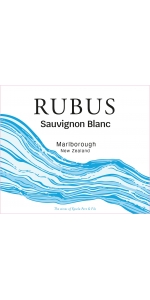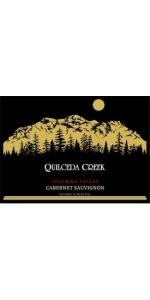Sbragia Sauvignon Blanc Dry Creek 2012
| Country: | United States |
| Region: | California |
| Winery: | Sbragia Family Vineyards |
| Grape Type: | Sauvignon Blanc |
| Organic: | Yes |
| Vintage: | 2012 |
| Bottle Size: | 750 ml |
Le Bihan Touraine Chenonceaux Sauvignon Blanc is made from 100 percent Sauvignon Blanc.
Touraine Chenonceaux "Revelation" is a limpid and brilliant colored wine with pale gold highlights. The nose is intense and expressive, full of floral aromas. It is dry and harmonious on the palate, with a tangy edge and a lively finish.
To drink as Aperitif, or with white meat, Loire asparagus and seafood.
Bihan Le Touraine Sauvignon Blanc is made from 100 percent Sauvignon Blanc.
Olfactory aspect : Limpid and brilliant with a pale gold
Nose: pronounced white floral bouquet
Palate : Dry, harmonious tangy edge with a lively finish
Gimenez Mendez Alta Reserva Sauvignon Blanc is made from 100 percent Sauvignon Blanc.
Gimenez Mendez Sauvignon Blanc shows a very pale hue, almost crystal clear in color. Intense and herbal bouquet in harmony with fruity notes of guava and green apple, mango and maracuja. The wine is full and ample on the palate with a very firm structure. Dry, crisp and lively in the mouth.
Sauvignon blanc grapes are hand harvested very early during some mornings of February. Banches are destemmed and delicately crushed. With a quick press, fresh and very aromatic juice are obtained. Juice is fermented in stainless steel tanks during 15 days at controlled low temperatures, between 14 to 16 °C .Once fermentation is finished lees are kept and stirred for 1 month to get a creamy texture. Then a carefully clarification is necessary. The wine is filtered and stabilized without cold, and finally bottled to keep the freshness. No oak.
Ideal to serve with very spicy seafood, sushi or salads, as well as white meats with sweet-sour sauces, paté. Serve chilled.
Review:
Riebeek Cellars Never Look Back Sauvignon Blanc is 100% Sauvignon Blanc.
Delicate green flavors with hints of tropical fruit on a crisp, dry finish.
Pairs with seafood, asparagus abd risotto.
Rubus Sauvignon Blanc Marlborough is made from 100 percent Sauvignon Blanc.
The Rubus Project was created by Fran Kysela as a way to source & sell incredible wines at value prices. All wines in this international project are hand-selected by Fran Kysela. Rubus wines are fruit driven, true-to-type values that over deliver - a true representation of quality for the consumer at an excellent price.
Aromas of gooseberry, lemongrass, boxwood, fresh celery and bready notes on the nose. The palate is dry to taste with juicy gooseberry and citrus flavors forming a light, refreshing medium bodied wine with a tart yet soft lingering finish.
Grapes are gently pressed, settled and racked to fermentation. Juice is cool fermented in stainless steel tanks for 21 days and left on the lees for 2 months prior to blending, light fining, filtering and bottling.
The perfect accompaniment to vegetable or light seafood dishes or to enjoy before a meal.
Since the founding in 1978, Quilceda Creek has dedicated itself to one thing: producing world-class Cabernet Sauvignon. Director of Winemaking Paul Golitzin believes that the winery’s greatest assets are the vineyards of the Columbia Valley. Through vineyard ownership and control, and through precision farming, they are able to grow and produce the highest caliber Cabernet Sauvignon. In award of their relentless pursuit of producing perfect Cabernet Sauvignon, Quilceda Creek has received seven 100 Point ratings from Wine Advocate, three 100 Point ratings from Owen Bargreen, two 100 Point ratings from Decanter and three Top Ten Wines of the Year from Wine Spectator.
The 2021 Quilceda Creek Cabernet Sauvignon is a wine for the ages. Potent aromas jump out of the glass, showing framboise candy, black tea, and a strong classic note of sandalwood. Savory cumin, sage, and garrigue round out this powerful nose. The palate is sweet and velvety, leading to an amazing crescendo of power and refinement.
Review:
The flagship 2021 Cabernet Sauvignon Columbia Valley is 100% Cabernet Sauvignon (90% from Champoux Vineyard and 10% from Mach One Vineyard) raised all in new barrels. It's slightly deeper hued than the CVR and has a stunning nose of blackcurrants, smoked tobacco, toasted spices, and graphite with a beautiful varietal, herbal undertone that comes through with time in the glass. Deep, rich, full-bodied, and velvety textured, this thrilling Washington State Cabernet Sauvignon will benefit from 4-5 years of bottle age and evolve for two decades. This is unquestionably up with the greatest vintages of this cuvée ever made.
-Jeb Dunnuck 100 Points
The 2021 Columbia Valley Cabernet Sauvignon from Quilceda Creek is once again another monumental release. It begins to impress with its striking perfumed aromas of ripe blackberries and dark currants, which are joined together with crushed violets, graphite, tobacco, and hints of licorice all developing in the glass. On the palate this possesses a gorgeous full body that is impeccably structured with beautifully polished tannins that result in an utterly seamless texture. This continues to impress with its excellent balance and concentration combined with remarkable overall power and finesse. There is a lovely touch of underlying acidity that ties it all together and provides a wonderful sense of freshness that carries it into the lavish finish. While this is already stunning in its youth, it is ultimately an age worthy wine which will go on to evolve for decades. Quilceda Creek sets the benchmark for Cabernet Sauvignon in Washington, and this is a clear example of why they have earned that reputation.
VARIETAL: 100% Sauvignon Blanc.
VINEYARD: Home Ranch is on the east side of Dry Creek and has been farmed by the Sbragia family for decades. !e Schmidt Ranch, farmed by my friends, Janice and Brian Schmidt, has been in their family since 1876.
VINTAGE: The growing season in Dry Creek Valley was nearly magical. Cool nights, foggy mornings and warm sunny days throughout summer and into harvest ripened a crop that was notable for both quality and quantity.
WINEMAKING: To emphasize the brightness and clarity of the fruit, we ferment the grapes in 100% stainless steel. The wine is placed in seasoned barrels until bottling in January and released with a screw cap closure that protects the bouquet and bright flavors.
TASTING NOTES: Citrus and tropical aromas are accented by succulent flavors of green apple, grapefruit and lemongrass, and a lovely minerality that carries into a long, crisp, refreshing ï¬nish. Altogether delicious!
Alcohol: 13.5%
TA: 7.25
pH: 3.20
Cases Produced: 5,030
"(includes 10% sauvignon musque; fermented in stainless steel, then aged for three months in new French oak; no lees stirring or malolactic fermentation): Pale yellow. Bright aromas of tropical fruits, lemon, gooseberry and white pepper, plus a rocky nuance. Offers good musky lift to the intense tropical fruit flavors. Finishes bright and tight, with pleasing savory length. A very good value. - ST"
- Stephen Tanzer's International Wine Cellar (May/June 2013), 90 pts
Sbragia Family Vineyards Estate
Sbragia Family Vineyards is located in the beautiful Dry Creek Valley and is where winemakers, Ed and Adam Sbragia, make their limited production wine. A third generation Dry Creek Valley vintner, Ed is well known for his position as Winemaster at Beringer Vineyards in Napa. He began working at Beringer in 1976, working under legendary winemaker, Myron Nighingale. During his career, Ed has become one of California’s most talented and respected winemakers. The Sbragia family history runs deep in the Dry Creek Valley. Ed’s grandfather came to the valley from Tuscany in 1904, where he worked in wineries, starting at the Italian Swiss Colony. Ed’s father, Gino, acquired his own vineyards near Healdsburg, growing zinfandel grapes for sale and home winemaking. "He made excellent wine," says Ed, "and he taught me that making wine is a very natural process – that good grapes and good techniques will always make good red wine."
In 2001, Ed created his own label, Sbragia Family Vineyards, to focus on making limited, individual lots of wine from grapes grown in select blocks of his favorite vineyards in Dry Creek, Napa, and Sonoma. Five of the wines, including Sauvignon Blanc, Chardonnay, Merlot and two Zinfandels, are sourced from Sbragia family-owned estate vineyards that range in size from five to thirteen acres. Like his tenure with Beringer, Ed continues to make “big reds,” including Cabernets from Howell Mountain, Mt. Veeder, Sonoma Mountain and Alexander Valley. The wines all exhibit Ed’s distinctive and acclaimed style – big, rich, balanced and polished.
The Sbragia Family Vineyard
At Sbragia Family Vineyards, we source grapes from about 50 acres of family-owned vineyards the Sbragias have been farming for over 100 years in Historic Dry Creek Valley. Ed & Adam also purchase grapes from their favorite vineyards throughout Sonoma and Napa Valleys. I’ve always had one foot in Sonoma and the other in Napa. Both areas mean a lot to me emotionally. I’m more attached to Dry Creek because it’s where I raised my kids. But the wines that I’ve made at Beringer are like children, so Napa is also a very special place to me.
Dry Creek Valley:
Dry Creek Valley, a premium winegrowing region, is located in Northern Sonoma County, California, only an hour north of the Golden Gate Bridge/San Francisco.
Renowned for its idyllic undisturbed beauty, Dry Creek Valley is home to over 9,000 acres of vineyards that carpet the intimate 16-mile long x 2-mile wide valley, floor to hillside. With a grape growing history going back 140 years – one of the longest in California – producing premium winegrapes is core to this region. In fact, the valley boasts one of the densest concentrations of Old Vine Zinfandel in the world.
Alexander Valley:
Located at the northern end of Sonoma County, the Alexander Valley is 22 miles long and varies in width from two to seven miles. On the hillsides to the east and west, and adjacent to the beautiful Russian River winding along the valley floor, the valley is home to a diversity of microclimates that support the growth of many wine grape varieties including Cabernet Sauvignon, Zinfandel, Chardonnay, Sauvignon Blanc, and many more.
Sonoma Valley:
The Sonoma Valley AVA centers on the Sonoma Valley (also known as The Valley of the Moon) in the southern portion of the county. The appellation is bordered by two mountain ranges: the Mayacamas Mountains to the east and the Sonoma Mountains to the west.
Along with being the area where so much of Sonoma County's winemaking history took place, the area is known for its unique terroir, with Sonoma Mountain protecting the area from the wet and cool influence of the nearby Pacific Ocean.
One finds a wide disparity between valley floor and mountain soils; those found in flatter, valley areas tend to be quite fertile, loamy and have better water-retention while the soils at higher elevations are meager, rocky and well-drained. In general, the structure, rather than the composition of the soil, is the deciding factor where grape plantings are concerned.
Napa Valley:
Though just 30 miles long and a few miles wide, Napa Valley is home to diverse microclimates and soils uniquely suited to the cultivation of a variety of fine wine grapes. Among the internationally acclaimed wines produced in this small region are Cabernet Sauvignon, Merlot, Pinot Noir, Chardonnay, Sauvignon Blanc, Zinfandel and Cabernet Franc.
- back
All older vintage wines have been purchased from a single collectors cellar. Pictures can be requested before shipment.
Gaja Sperss is made from 100 percent Nebbiolo.
Vibrant and intense notes of herbs and spices such as thyme, cloves and black pepper. On the palate the wine is tense, loaded with energy that will need serious ageing to fully develop although extremely approachable in its youth. Impressive fruit concentration, with dark and ripe fruits – prunes and black cherries. Acidity and tannins lift this wine to its freshest expression.
Nebbiolo based wines have not only complexity and structure but also great elegance and finesse. The distinctive silky tannins of the Nebbiolo make it the right wine to drink with meat. Usually a young vintage goes very well with richer dishes because of the stronger tannins; mature Barolos are more suitable with delicate white meat courses or braised meat courses with sauces or concentrated red wines reductions.
Review:
The 2019 Barolo Sperss is rich with dark mineral earth, black cherry, and Earl Grey tea. Long and mouthwatering, it has a powerful structure while retaining finesse. It is fantastically balanced, with gripping tannins, fresh acidity, and notes of forested earth and ripe red berries. A wine for the long haul, this is another great and noble wine to drink over the coming three decades.
-Jeb Dunnuck 99 Points

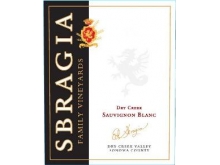
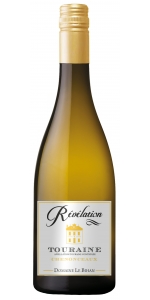
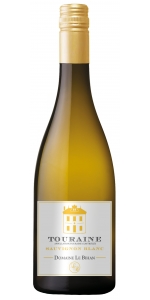
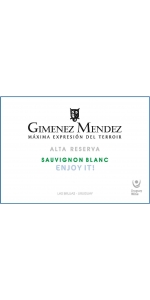
-150x300.jpg)
